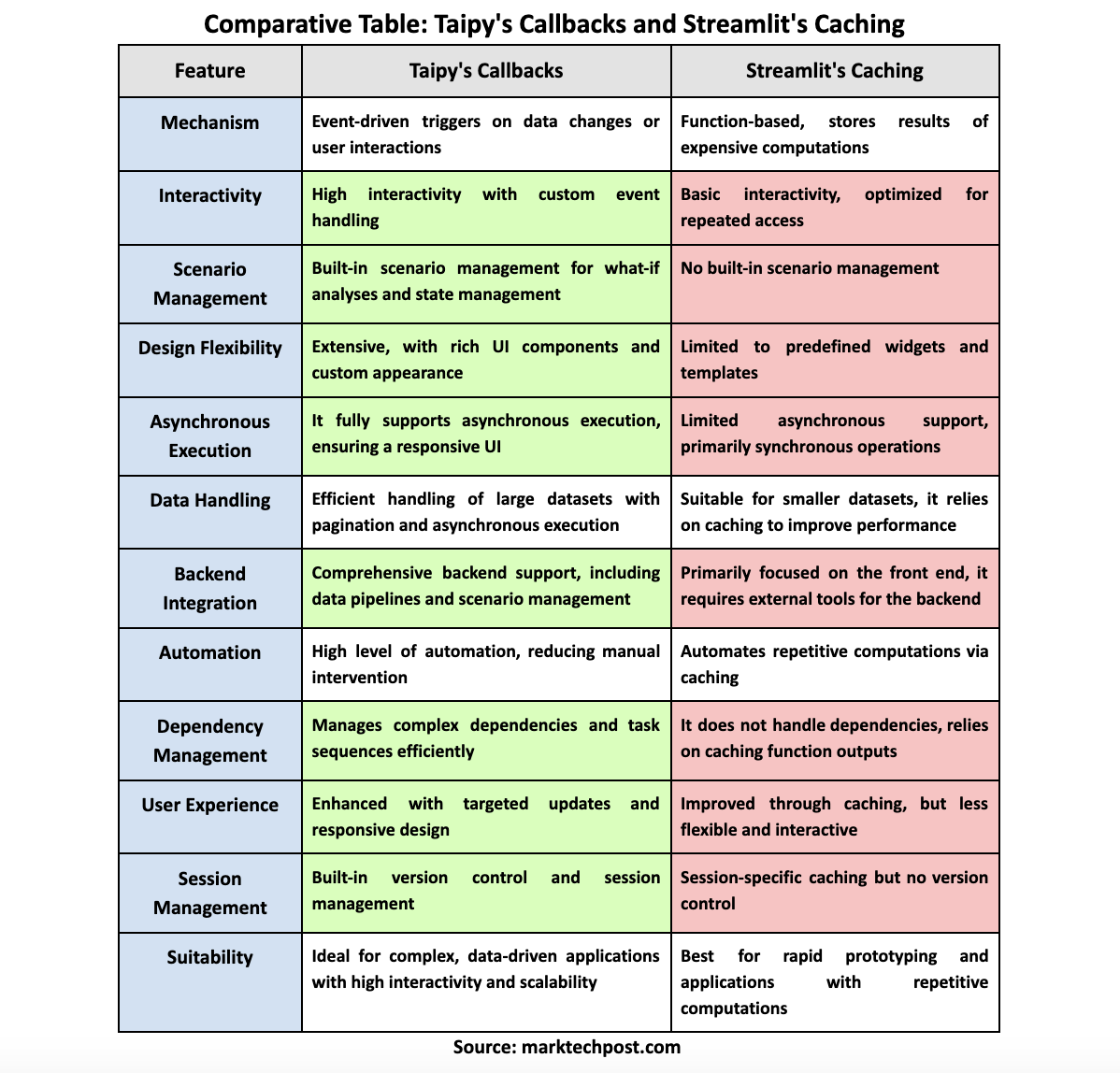
Taipy and Streamlit: Practical Solutions and Value Comparison
Taipy: Advanced Callbacks for Enhanced Interactivity
Taipy offers a robust environment for building complex data-driven applications, simplifying front-end and back-end development. It provides extensive design flexibility, event-driven callbacks, and asynchronous execution to enhance performance and user experience.
Streamlit: Simplifying Caching for Rapid Prototyping
Streamlit converts Python scripts into interactive web applications with minimal effort. Its caching system optimizes performance by storing results of computations, supporting session-specific caching and function-based caching.
Comparison: Taipy vs. Streamlit
Taipy excels in production environments, offering extensive features catering to both early-stage development and live, user-facing products. It has advanced callback mechanisms, while Streamlit is known for rapid prototyping capabilities.
Difference in UML infrastructure between Taipy and Streamlit
Taipy’s infrastructure is designed for enterprise-level applications, handling complex workflows and data dependencies. It supports automation, asynchronous execution, and tight integration of core components. Taipy’s structured approach ensures reliability and maintainability, providing a significant edge over simpler frameworks.
Why are Taipy infrastructure and UML better compared to Streamlit?
Taipy’s infrastructure is comprehensive and robust, well-suited for enterprise-level applications, with advanced features such as automation, asynchronous execution, and tight integration of core components.
Why are Taipy Callbacks a Better Solution?
Taipy’s advanced features, flexibility, deep integration with core components, and use cases make it a better solution compared to Streamlit caching.
Conclusion
Taipy offers a more comprehensive solution for developers building complex, scalable applications. Its advanced callback mechanisms, design flexibility, and robust support for large datasets make it a powerful tool for production environments.
























